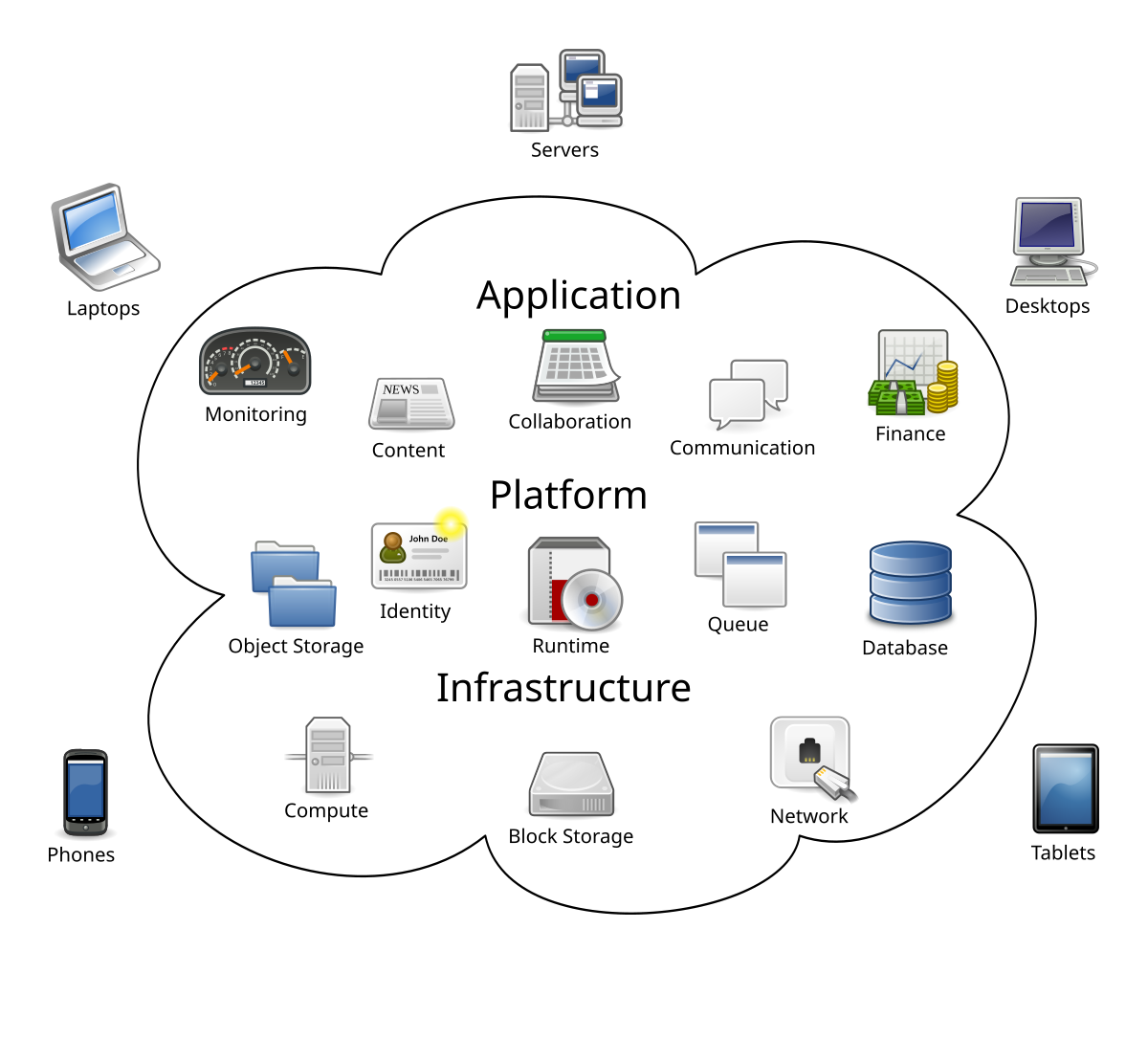Benefits of Cloud Computing in Education
Among the many organizations that find cloud computing systems useful are educational institutions. Cloud computing has simplified the admission and administration processes, as well as improved general staff communication. The following diagram depicts the simplification that has emerge as a result of cloud computing in education.
Among the many organizations that find cloud computing systems useful are educational institutions. Cloud computing has simplified the admission and administration processes, as well as improved general staff communication. The following diagram depicts the simplification that has emerge as a result of cloud computing in education.
In the traditional deployment model, all Information Technology
resources (services and tools) are housed and managed in-house. These services
and tools may be migrated to the cloud and consumed directly over the Internet
either as fully functional applications (SaaS), development platforms (PaaS) or
raw computing resources (IaaS) (Yadav 2014). The diagram below depicts how the different
categories of university users may consume cloud services.
Educational
institutions can benefit in terms of both cost reduction and efficiency by
outsourcing infrastructure, platform or software as a service.
Cloud computing,
despite its hype, is being widely deployed, with its dynamic scalability and
usage of virtualized resources, in many organizations for several applications.
It is envisioned that, in the near future, cloud computing will have a
significant impact on the educational and learning environment, enabling their
own users (i.e., learners, instructors, and administrators) to perform their
tasks effectively with less cost by utilizing the available cloud-based
applications offered by the cloud service providers (Alabbadi, 2011).
Leading
cloud providers like Microsoft, Google and Amazon have recognized the
importance of adjusting their computing services specifically to the needs of
educational institutions. These include customized software packages at low
prices that more institutions can afford. For instance, Microsoft have been
reforming education for more than two decades through its services like Office
365 for Education, Business Productivity Online Suite (BPOS), Exchange Hosted
Services, Microsoft Dynamics CRM Online and Office Web Apps.
In
another instance, Google Apps for education is another widely used platform for
outsourcing free web-based email, calendar and documents for collaborative
study. Google has initiated two important campaigns for introducing
improvements in the education sector. The first initiative is Chromebooks for
Education and the other initiative is Tablets with Google Play for Education.
Tablets with Google Play for Education enable educators to smoothly implement
the latest technology solutions into classrooms and make useful apps available
to their students.
Truth be told, the
introduction cloud computing in education has helped in alleviating the problems
associated with traditional education system. These problems include but not
limited to; the lack of infrastructure and if available, then maintenance of
that infrastructure and other issue like procuring and maintaining a wide range
of hardware and software which require ample, ongoing investment and the skills
to support them. Cloud computing be a solution to all these issues. The cloud
guarantees that students, instructors, personnel, guardians, and staff have
access to basic data utilizing any gadget from anyplace (Neha Lad 2016). Cloud computing offer
numerous benefits as compared to the traditional education system. The Benefits
of Cloud Computing for Institutions and Students include:
§ Personalized
Learning: students can access a wide array of resources and software tools that
suit their learning styles and interests.
§ Reduced
Costs: Help institutes to reduce costs
and accelerate the use of new technologies to meet evolving educational needs.
Students can use applications like MS Office for free without having to
purchase.
§ Accessibility: From anywhere one can login and access the
information.
§ No
Extra Infrastructure: Colleges and governments are now free from wasting time
on worrying about the buildings, labs, teachers etc.
§ User
Friendly: It is easy to understand and easy to operate
In as much as cloud
computing is offering low cost flexible solutions to the issues associated with
traditional education system, much concern should place on Security, privacy,
reliability, Vendor lock and failures.



